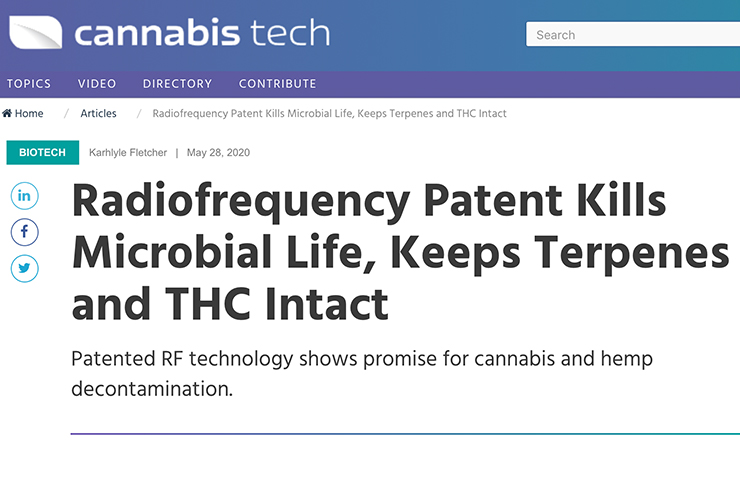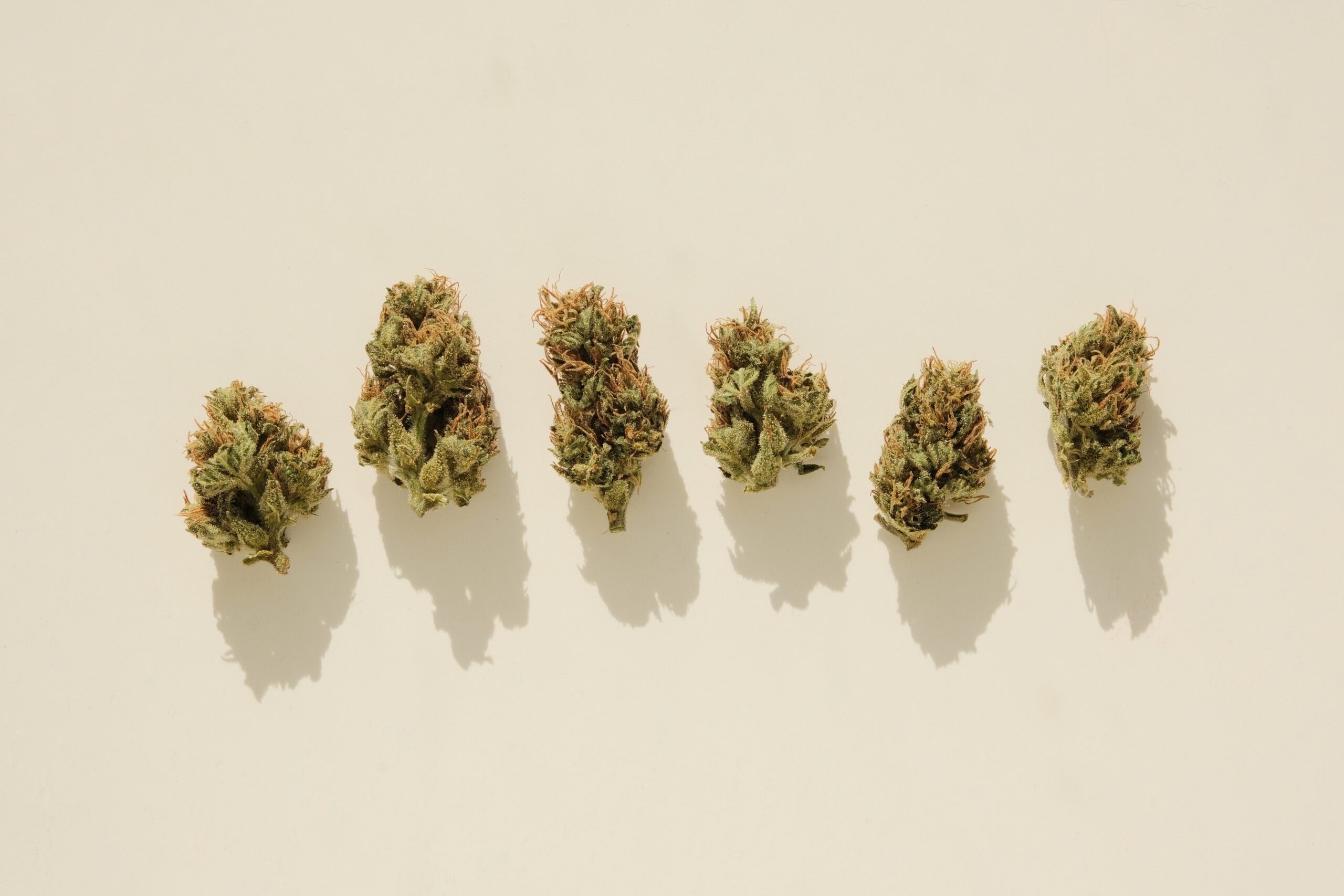تست میکروبیولوژی - سوالات متداول
تست میکروبیولوژی چیست؟
تست میکروبیولوژی یک روش آزمایشگاهی برای بررسی و شناسایی میکروارگانیسمهایی مانند باکتریها، مخمرها، کپکها و سایر عوامل بیماریزا است. در حشیش، اصطلاح "تست میکروبیولوژی" به شمارش تعداد باکتری ها، مخمرها، کپک ها و غیره اشاره دارد، یا اینکه آیا یک پاتوژن خاص در محصول وجود دارد یا خیر.
کاهش لگ در میکروبیولوژی چیست؟
در میکروبیولوژی "کاهش log" معیاری است که نشان می دهد یک فرآیند چقدر در کاهش پاتوژن ها موثر است. هرچه کاهش لگ بیشتر باشد، فرآیند در کشتن پاتوژن ها موثرتر است. Log مخفف لگاریتم است که یک اصطلاح ریاضی است. هر افزایش "log" یک افزایش 10 برابری است. به عنوان مثال، 3-log برابر با 10 است3 یا 10*10*10 = 1000.
کاهش log قدرت را در جهت مخالف می گیرد. به عنوان مثال، کاهش log به میزان 1 معادل کاهش 10 برابری است یا تعداد نهایی 1/10 تعداد اولیه است. بنابراین، درصد کاهش (1 - 1/10) x 100 = 90% است.
برای تعیین کاهش لاگ، آزمایشگاه های میکروبیولوژی تعداد واحدهای تشکیل دهنده کلنی (CFU/g) یک میکروارگانیسم معین، به عنوان مثال، TYMC، را در یک محصول قبل از درمان می شمارند. سپس نمونه دیگری پس از درمان با فرکانس رادیویی برای اندازه گیری CFU/g از همان پاتوژن ارسال می شود. نتیجه تفاوت بین "قبل" و "پس از" به عنوان کاهش گزارش بیان می شود.
به عنوان یک قانون اساسی، برای هر عدد کاهش Log اضافی، 9 را به درصد کاهش اضافه میکنید – بنابراین کاهش log 3، همانطور که در بالا نشان داده شده است (1 - 1/1000) x 100 = 99.9% کاهش در مقایسه با کاهش log 6 است که معادل کاهش 99.99991TP است.
آزمایش رنگ آمیزی گرم در میکروبیولوژی برای چه مواردی استفاده می شود؟
در میکروبیولوژی، رنگ آمیزی گرم آزمایشی است که برای شناسایی باکتری ها استفاده می شود. نمونه ای رنگ آمیزی می شود و زیر میکروسکوپ بررسی می شود تا نحوه واکنش باکتری ها به لکه مشاهده شود. باکتری ها بر اساس رنگی که تغییر می کنند به دو دسته گرم مثبت یا گرم منفی طبقه بندی می شوند. باکتری های گرم مثبت بنفش به نظر می رسند، در حالی که باکتری های گرم منفی صورتی به نظر می رسند.
CFU ها در حشیش چیست؟
CFU مخفف Colony Forming Units است. این نشان دهنده تعداد میکروارگانیسم های زنده در شاهدانه است. CFU با شمارش تعداد کلنی هایی که روی یک ظرف پتری رشد می کنند تعیین می شود.
چه میکروب ها و عوامل بیماری زا در آزمایش شاهدانه غربالگری می شوند؟
میکروب ها و پاتوژن های غربالگری شده در محصولات شاهدانه متفاوت است و به مقررات دولتی بستگی دارد. برخی از موارد رایج عبارتند از کل مخمر و کپک (TYMC)، شمارش هوازی کل (TAMC)، آسپرژیلوسکلیفرم ها E. coli، و صفرا-باکتری های گرم منفی متحمل (BTGN).
انواع آزمایش های آلودگی میکروبی در حشیش چیست؟
دو نوع آزمایش میکروبی برای مواد گیاهی شاهدانه استفاده می شود. روش اول یک روش مبتنی بر کشت است که شامل آبکاری یک نمونه بر روی محیط های انتخابی و انکوباتور آن در شرایط خاص است. تا امکان رشد میکروب های هدف را فراهم کند. سپس کلنی های تشکیل شده برای تعیین بار میکروبی شمارش می شوند، به صورت CFU/g بیان می شود. روش دوم روش PCR است که تشخیص می دهد و DNA میکروبی خاص پاتوژن ها را در نمونه کمیت می کند.
آیا درمان فرکانس رادیویی به موفقیت در آزمایش میکروبی کمک می کند؟
ثابت شده است که درمان با فرکانس رادیویی تعداد کل مخمر و کپک (TYMC) را بیش از 99.9% کاهش می دهد و با الزامات نظارتی مطابقت دارد. فرکانس رادیویی همچنین در پرداختن به معیارهای آزمایشی دیگر مانند شمارش میکروبی هوازی کل (TAMC)، گرم منفی تحمل کننده صفرا (BTGN)، کلیفرم ها و آسپرژیلوس.
آیا فرکانس رادیویی آفت کش ها یا فلزات سنگین را از بین می برد؟
درمان فرکانس رادیویی بر کاهش آلودگی میکروبی مانند مخمر، کپک و باکتری تمرکز دارد، اما آفت کش ها یا فلزات سنگین را مورد توجه قرار نمی دهد یا از بین نمی برد.
آیا فرکانس رادیویی می تواند پنی سیلیوم را درمان کند؟
پنی سیلیوم نوعی کپک است. به طور طبیعی در محیط (خاک، پوشش گیاهی در حال پوسیدگی و هوا) یافت می شود.
مانند هر میکروارگانیسم دیگری، خانواده پنی سیلیوم شامل طیف گسترده ای از گونه ها است که ثابت شده است که تعداد کمی از آنها برای انسان بسیار مفید هستند. به عنوان مثال، آنتی بیوتیک پنی سیلین توسط پنی سیلیوم تولید می شود و قالب مورد استفاده در تهیه پنیر کممبر از خانواده پنی سیلیوم است.
از سوی دیگر، بسیاری از گونه های پنی سیلیوم آلاینده محسوب می شوند و برخی حتی می توانند باعث عفونت در انسان یا تولید مایکوتوکسین شوند.
با دانستن اینکه فرکانس رادیویی (RF) در کاهش کل مخمر و کپک موثر است، انتظار می رود که RF بتواند جمعیت پنی سیلیوم را کاهش دهد. با این حال، ما دادهای نداریم که به طور خاص مربوط به گونههای Penicillium در مورد شاهدانه باشد و نمیتوانیم کاهش لگ خاص را پیشبینی کنیم.
آیا فرکانس رادیویی مایکوتوکسین ها را از بین می برد؟
مایکوتوکسین هایی مانند آفلاتوکسین ها سموم طبیعی هستند که توسط کپک هایی مانند آسپرژیلوس تولید می شوند. این سموم می توانند ریشه انواع اثرات نامطلوب سلامتی هم در انسان و هم در حیوانات باشند. سرکوب سیستم ایمنی (تضعیف سیستم ایمنی) و سرطان از جمله اثرات سلامتی مرتبط با آفلاتوکسین هستند. بیشتر مایکوتوکسین ها از نظر شیمیایی پایدار هستند و در طی فرآوری مواد غذایی به طور کامل از بین نمی روند. برای از بین بردن این ترکیبات، شرایط پردازش پیچیده تر و شدیدتر مورد نیاز است.
در گذشته ما اثر RF را بر کاهش آفلاتوکسین در ذرت آزمایش کردهایم و مقداری کاهش در غلظت آفلاتوکسین در دماهای بالا (110-120 درجه سانتیگراد) مشاهده کردیم. ما هیچ داده ای در مورد تأثیر RF بر مایکوتوکسین ها در شاهدانه نداریم. با این حال، بر اساس تجربه قبلی، می توان گفت که زمان و دمای فرآیند RF برای کاهش جمعیت میکروبی در شاهدانه برای از بین بردن مایکوتوکسین ها کافی نیست.
آیا فرکانس رادیویی می تواند باکتری های گرم منفی مقاوم به صفرا را درمان کند؟
باکتری های گرم منفی تحمل کننده صفرا (BTGN) گروهی از باکتری ها هستند که می توانند در شرایط سخت معده انسان زنده بمانند. آنها مجهز به غشایی هستند که آنها را در برابر طیف وسیعی از مواد شیمیایی مانند شوینده ها و آنزیم های ضد میکروبی یا حتی بسیاری از آنتی بیوتیک ها محافظت می کند. برخی از باکتریهای خانوادههای انتروباکتریاسه، سودومونا و آئروموناس عضو باکتریهای گرم منفی مقاوم به صفرا هستند. آنها به طور گسترده در محیط پخش می شوند.
در ایالات متحده، سازمانهای نظارتی که از مونوگراف کانابیس داروسازی گیاهی آمریکا به عنوان مرجعی برای تعیین حد میکروبی قابل قبول در شاهدانه استفاده میکنند، نیاز به آزمایش باکتریهای گرم منفی مقاوم به صفرا با حد قابل قبول کمتر از 1000 CFU/g دارند. واشنگتن، ماساچوست، نیومکزیکو، نیویورک، ایلینویز و اوهایو از جمله ایالت هایی هستند که آزمایش های لازم برای باکتری های گرم منفی مقاوم به صفرا را دارند.
قوانین کانادا نیاز به آزمایش برای باکتری های گرم منفی متحمل صفرا در شاهدانه دارد. Ziel تجربه محدودی با اصلاح BTGN دارد، با این حال، در این مرحله Ziel داده های کافی برای پیش بینی کاهش گزارش مورد انتظار BTGN با دستور پایه را ندارد.
آیا فرکانس رادیویی می تواند بکشد آسپرژیلوس?
در تولید محدودی روی گل شاهدانه که آزمایش آن مثبت بود آسپرژیلوس، فرکانس رادیویی توانست با موفقیت آن محصول را به انطباق برساند.
آیا کپک یا مخمر پس از درمان با فرکانس رادیویی دوباره رشد می کند؟
خیر. تا زمانی که سطح فعالیت آب زیر 0.65 باشد، کپک ها، مخمرها و باکتری ها دوباره رشد نمی کنند. گواهیهای آنالیز معمولاً سطح فعالیت آب را اندازهگیری میکنند. بهعلاوه، برخی از ایالتها برای اطمینان از پایداری محصول پس از قرار گرفتن در داروخانههای خردهفروشی، به سطوح فعالیت آب <0.65 یا 0.60 نیاز دارند.
آیا کولتیواتورها باید قالب های رایج را قبل از درمان فرکانس رادیویی شناسایی کنند؟
کشتکنندهها نیازی به شناسایی نوع کپک قبل از درمان ندارند.
آیا فرکانس رادیویی می تواند کپک پودری را برطرف کند؟
متاسفانه خیر با پیشرفت قالب، اختلال بینایی رخ می دهد. هیچ فرآیند اصلاحی وجود ندارد که بتواند سفیدک پودری را از بین ببرد. توصیهها عبارتند از بهبود فرآیندهای بالادستی قبل از برداشت، مدیریت مؤثر فرآیند پس از برداشت و اصلاح با فرکانس رادیویی.

آیا پس از درمان محصول با فرکانس رادیویی، بازسازی اتفاق میافتد؟
خیر. با جزئیات نمودار، تا زمانی که سطح فعالیت آب زیر 0.65 باشد، کپک ها، مخمرها و باکتری ها دوباره رشد نخواهند کرد. گواهیهای آنالیز معمولاً سطح فعالیت آب را اندازهگیری میکنند. بهعلاوه، برخی از ایالتها برای اطمینان از پایداری محصول پس از قرار گرفتن در داروخانههای خردهفروشی، به سطوح فعالیت آب <0.65 یا 0.60 نیاز دارند.
منابع بیشتر برای تشعشعات یونیزه کننده در مقابل پرتوهای غیر یونیزه




